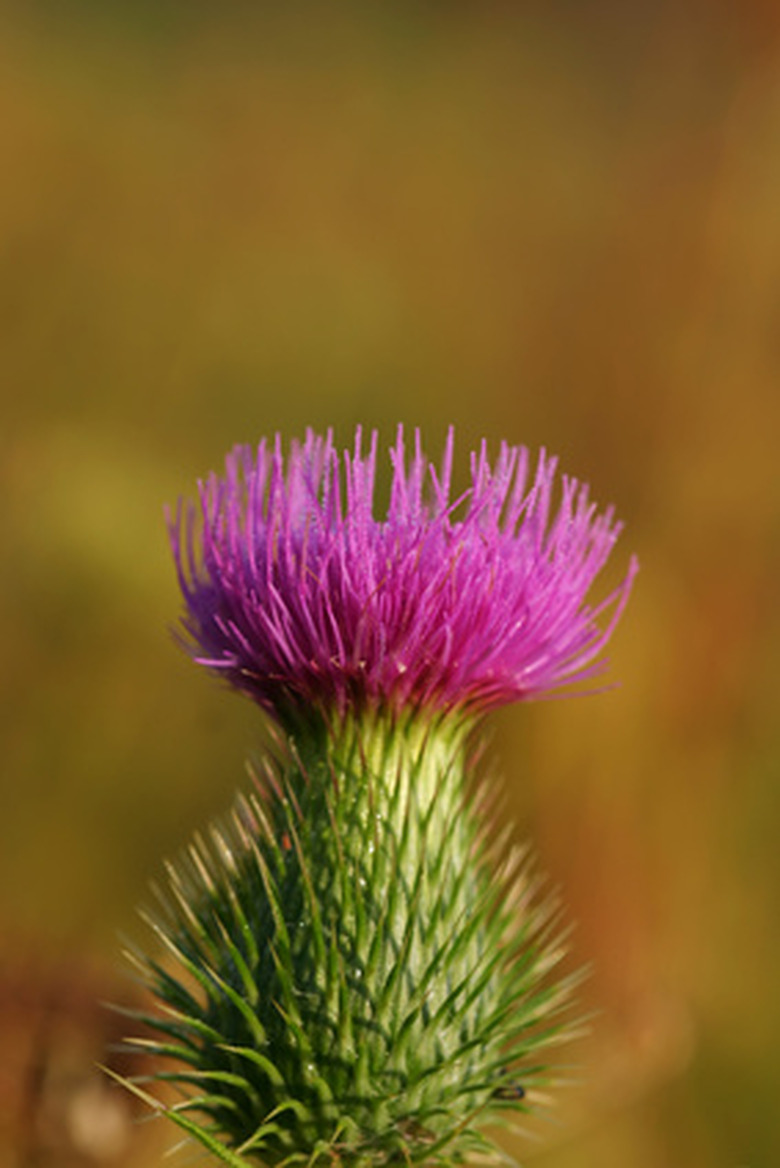Thistle Identification
Thistles can be found growing in many locations–lawns, garden beds, along the roadside, and in pastures and fields. Thistles can be identified by the shape of their leaves, their color, their spines and the color of their flowers. There are five common thistles: bull thistle, musk thistle, Scotch thistle, distaff thistle and Canada thistle.
Bull Thistle
Bull thistle, also known as Cirsium vulgare, is a biennial thistle. The leaves are one of its primary means of identification. Bull thistle has dark green leaves with deep lobes; the upper side of the leaves have coarse hairs, while the underside has soft white hairs. The tip of each of the lobes of the bull thistle has a long, yellow spine. The flowers are reddish-purple in color, and they appear in the months of June through July. Bull thistle reaches a height of from 2 to 6 feet.
- Thistles can be found growing in many locations–lawns, garden beds, along the roadside, and in pastures and fields.
- The tip of each of the lobes of the bull thistle has a long, yellow spine.
Musk Thistle
Musk thistle (Carduus nutans) is a 3- to 8-foot biennial thistle. A major identifiable characteristic of musk thistle is that the outer edge of the leaf is silver in color, while the interior of the leaf is light green. You will also find 1/8- to 3/8-inch spines on the tips of the leaves. This thistle is devoid of leaf hairs. The flowers, which appear in May through June, are quite large (2 to 3 inches in diameter), purple/lavender in color, and round in shape.
Scotch Thistle
Scotch thistle can grow to a height of from 3 to 9 feet. It is also known as Onopordum acanthium and can be either and annual or a biennial plant. The leaves are long and large (up to 18 inches in length), and they are bluish-grayish green in color and covered with fine hairs. As with other thistles, the tips of the leaves have spines. Globe-like, reddish-purple flowers appear in May through June.
- Musk thistle (Carduus nutans) is a 3- to 8-foot biennial thistle.
- The leaves are long and large (up to 18 inches in length), and they are bluish-grayish green in color and covered with fine hairs.
Distaff Thistle
Distaff thistle or Carthamus lanatus, an annual thistle, can reach a height of from 2 to 4 feet. Flowers of the distaff thistle are oblong, yellow in color, and flowering occurs from May through June. It has blade-like leaves with wool-like hairs and spiny tips.
Canada Thistle
Cirsium arvense, or Canada thistle, is a perennial that can spread rapidly through its horizontal roots and by seeding. It is easily identified by its lobed and oblong leaves, which are waxy, green in color and spine tipped. Lavender flowers appear in the months of June through July and are formed in clusters at the ends of the stems. Canada thistle will reach a height of 2 to 3 feet.
- Distaff thistle or Carthamus lanatus, an annual thistle, can reach a height of from 2 to 4 feet.
